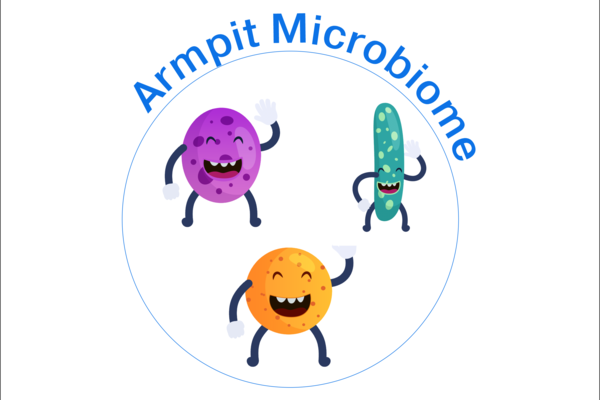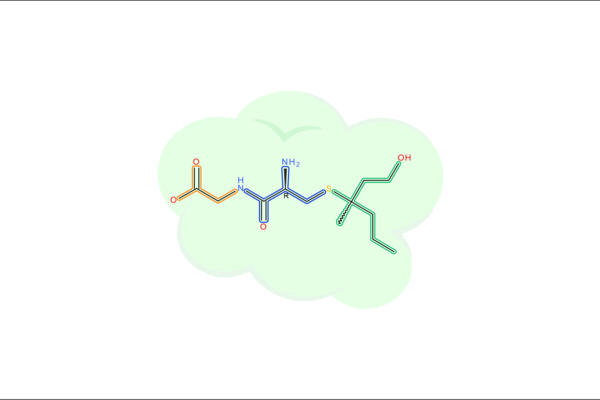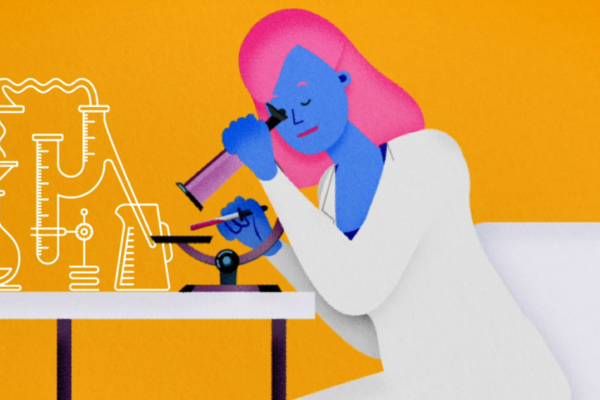The Science Behind B.O.
The Skin Microbiome
Living in the Pits
The Biochemistry of B.O.
How can science block B.O.?
Evolution of B.O.
Know Sweat
Most people associate body odour with sweat, however sweat is actually odourless and it is the pesky bacterial residents such as Corynebacterium and staphylococci in your armpit that turn your armpit sweat into BO!
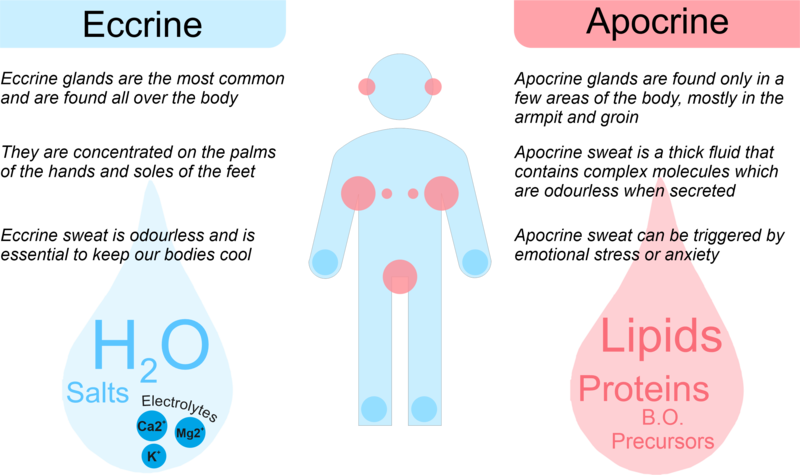
Distribution of sweat glands in the human body
We mainly produce two types of sweat, but bacteria can only use one type to make BO. The human body has millions of sweat glands distributed all over the skin, they come in two main types, Eccrine and Apocrine. Eccrine glands are found all over the body and are concentrated on the palms of your hands and soles of your feet. Eccrine glands secrete mainly water and salt, this is an important and essential process that keeps our bodies cool (called thermoregulation).
The second type of sweat gland is the apocrine gland. Apocrine glands are found only in a few places on your body and are typically associated with hair follicles. Apocrine glands are mainly found in your genital area and are concentrated in your armpit. Apocrine glands develop during puberty and produce a thick kind of sweat that is made up of different types of proteins and fats.
Bacteria use apocrine sweat to make body odour.
Skin Microbiome
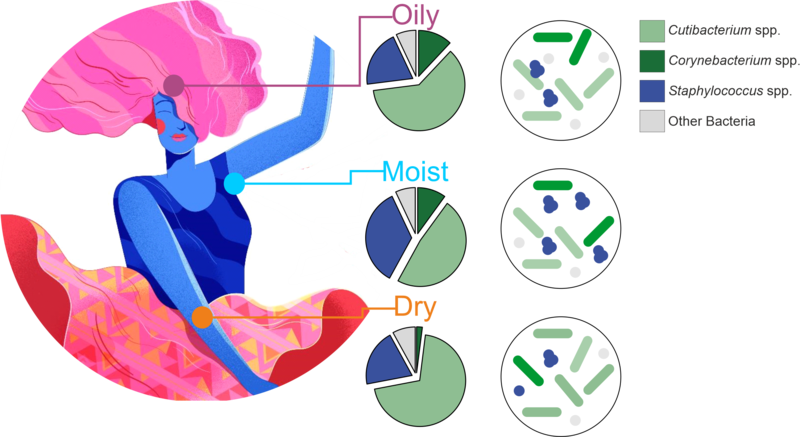
Different parts of the body have different composition of skin microbes.
The human skin is a complex and dynamic ecosystem that is home to a diverse range of microorganisms (bacteria, fungi, archaea, and viruses) collectively known as the skin microbiota. These microbes live together in communities all over your body, they are typically referred to as the skin microbiome (this represents the collection of genomes from all microorganisms found within the community). The skin microbiome is an important part of our development, and it is seeded at birth. These microbial residents are important in early life in educating the immune system to recognise commensal microbes (neutral or beneficial impact to the host) while being alert to invading pathogens.
The interesting thing about the skin microbiome is that is unique to you, much like a fingerprint. Some parts of the skin microbiome are similar to other individuals, but other parts are uniquely yours. This can be influenced by several factors like age, genetics, where you live and your diet. Different parts the body host different communities of microbes. These communities are made up of diverse microbes, high diversity means more different types whereas low diversity means on a few types of microbes. High skin microbiome diversity generally means more resilient to external stresses – this helps keep out invading pathogens and keeps your skin healthy.
Living in the Pits: Meet the bacteria behind your B.O.
The armpit is a unique enivroment, it is moist and nutrient rich. Three main types of bacteria thrive here, namely Staphylococcus, Corynebacterium and Cutibacterium. Other less dominant bacteria (such as Anaeroccocus and Peptoniphilus) are also present in the armpit, however species of Staphylococcus and Corynebacterium are the main culprits behind B.O.
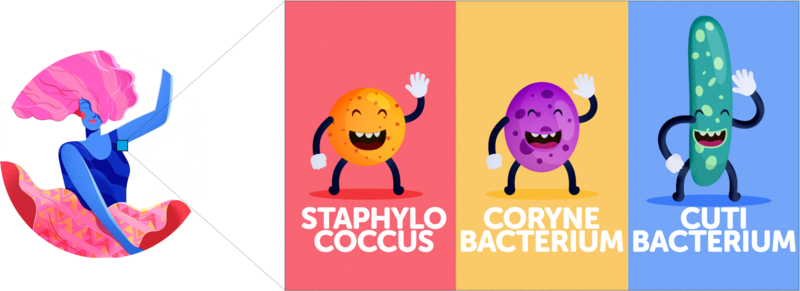
Staphylococcus hominis is one the main culprits of B.O.
One of the main culprits behind that pungent BO smell is a microbe called Staphylococcus hominis. S. hominis has evolved to thrive in the armpits. It can seek out particular molecules in the apocrine sweat that no other armpit microbes can. These stinky molecules are call thiols and are rich in sulphur and are the main cause of BO, the same element that make rotten eggs smell. S. hominis has a specific pathway to produce B.O.
1. S. hominis has a specific transport system to recognise these thiol containing molecules (Cys-Gly-3M3SH) and move them inside their cell.
2. Once S. hominis swallows the molecule whole it needs to break it up into smaller pieces so it can digest it and use if for food and energy. It uses a general enzyme (PepA) that can cleave off the terminal amino acid (glycine) from the Cys-Gly-3M3SH molecule to produce Cys-3M3SH.
3. S. hominis has developed a very specific enzyme to recognise this molecule Cys-3M3SH called ShPatB or BO enzyme. No other bacterium in the armpit has the BO enzyme so greedy S. hominis gets to eat up all the thiol molecules by itself. S. hominis further breaks up this molecule to release a thiol containing volatile (3M3SH).
4. In this process it releases the sulphur containing molecule (3M3SH) that floats outside of its cell and wafts up from the armpit to our noses. Specialised cells in our nose detect this molecule and tell us that us that it is body odour. We smell this as the characteristic BO smell which can be a musty, cheesy, onion smell to some people.
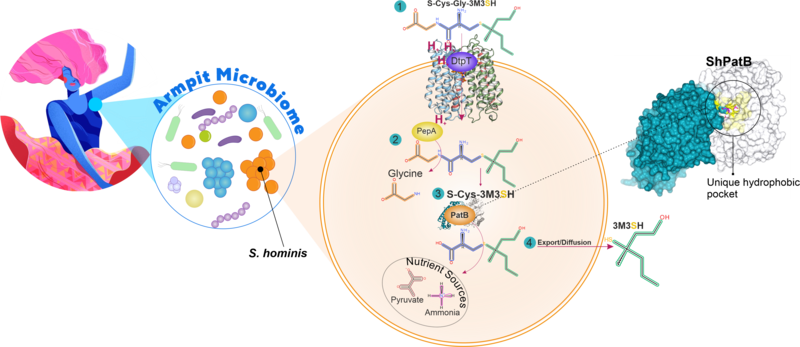
Molecular pathway of S. hominis producing the volatile compound 3M3SH
Biochemistry of B.O.
Body odour is a complex phenomenon and is mostly caused by bacteria on our skin transforming odourless molecules in our sweat into volatile stinky molecules that we detect as unpleasant. The apocrine glands provide unique odourless precursor molecules that bacteria can transform into odorous molecules.
Some of the main odorous compounds are volatile fatty acids (VFAs) and thiol containing molecules (Thiols).
Odourless Precursor molecules are secreted in apocrine sweat, bacteria such as Staphylococcus hominis and Corynebacterium sp. have transporter proteins that allow them to recognise specific odourless BO precursors and swallow them whole. Once inside the cell, specific enzyme recognises the BO molecules and break them into smaller pieces. Some of which bacteria can use for food and energy and the rest of the molecule that is not useful get secreted outside the bacteria as a volatile compound that we detect as BO.

How can science block B.O.?

Our research into the B.O. pathway we can identified the transporter protein involved in moving the odourless CG-3M3SH molecule into the cell and also the enzymes which break the molecule down into the smelly 3M3SH.
The main way we analyse the structures of these protein is by X-ray crystallography, a technique which causes the proteins of interest to form tightly packed crystal lattices which then can be analysed by x-rays to get the 3D structure of the protein.
We are aiming to identify molecules which bind to the transport protein (PepTSH) on the bacterial surface to stop B.O. production. Using X-ray crystallography along with other binding analysis we can discover how molecules interact with PepTSH and test to see if they could be used in future deodorant products.
Evolution of Body Odour
In the present day we usually think of body odour as a negative thing, associating it with poor hygiene and cleanliness. This obsession with cleanliness is relatively new for us humans and in the UK can be traced to the Victorian period where there was a strong association of 'bad' odour with disease. Going back only a couple of hundred years then we all probably had much stronger odour than we do now, and our 'smell' would form part of our overall personality.
We wondered if we could see any evidence for thioalcohol production by S. hominis as being an ancient process and Michelle Rudden was able to estimate the time at which we think the key enzyme first evolved. While there are limits as to how accurate this guess can be, we are confident that this was a long long time ago, we guess about 60 million years ago, which definitely predated the emergence of Homo sapiens as a species and puts thioalcohol-based odour production back into the great apes.
We know gorillas can signal to each other using smell but don't know much about the mechanism of this - interestingly they have a whole load more apocrine glands than we do, perhaps pointing to much larger roles in smell-based communication that we have now.
Anyway, whether our 'smell' was a part of the 'chemistry' that brought early humans together to reproduce is not clear, but our research certainly suggests that it could have been.
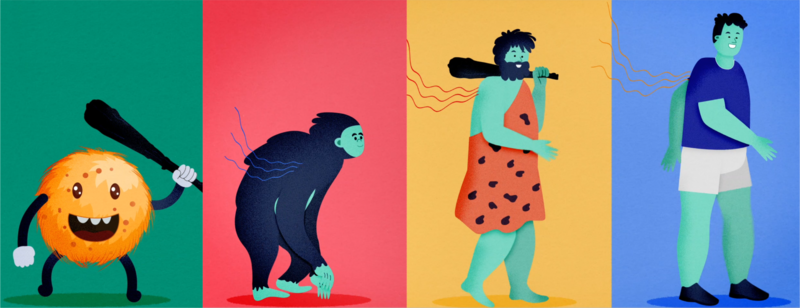
Test what you've learned with our B.O. Quiz
Contact Us
University of Oxford
South Parks Road
Oxford
OX1 3QU
University of York
York
YO10 5DD
United Kingdom



